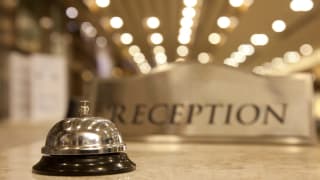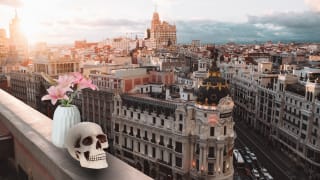Creating a place brand strategy that works for all levels of place
How can you create a brand that works for your city and your region? And what's the key to leveraging a nation brand to work for all levels of place within a country? Ahead of his presentation at City Nation Place Global, we reached out to Cor Jansen, Director at Utrecht Marketing, to understand how they have worked to create a complementary place brand strategy that works for all levels.
First, I understand that Utrecht Marketing is responsible for both the city and the region – can you explain how you leverage these two levels in your marketing?
Utrecht Marketing is responsible for the brand and marketing management of both Utrecht (city) and Utrecht Region. We do so using the multiple helix model, which entails a collaboration between public authorities, the business community, knowledge and education institutions, and cultural, social and sports institutions.
The fact that the city and the region are both called Utrecht is a major advantage. The content of our messaging and the name of the sender – either Utrecht or Utrecht Region – can be tailored to the target group and goal. Roughly, we use the Utrecht brand at the local, regional and national level, and the Utrecht Region brand at the international level, for both leisure and business. Since these geographical borders are less meaningful and less relevant at the international level, we can be flexible in terms of reference. It’s vital to always think outside-in, to start from the angle of the target group and to apply the principle of differential marketing. Who you want to reach, determines how you tell your story and what the story highlights.
I hear that you’re currently in the process of creating a brand team for Utrecht Region to complement the brand team for the city. What lessons are you taking with you when creating the new team?
The Utrecht Brand Team for the city brand has been in place since 2014. The current team consists of eleven people from ten prominent organisations. It’s part of the Utrecht way of doing things that the brand ownership has not been invested in any single party – obvious candidates would be the municipal government or the Destination Marketing Organisation – but to invest it in multiple parties with large public reach and a strong influence on how the city is perceived. Private parties in particular play an important role in activating and creating support for your brand.
It therefore makes sense to compile a comparable team for the Utrecht Region brand, and that’s what we’re working on at present. But the bigger the geographical area is, the harder it can be to organise the governance structure and to build support for the brand. At the same time, precisely this challenge makes it important to do so. After all, you want to be as consistent as possible in what you present to the outside world, in what your story is as a place brand. And of course you want the story to be about all the right things.
Are there any differences between how you position the city and the region? How are you creating a narrative that works for both?
The city and the region have embraced the same vision and the same ambition: Healthy Urban Living for Everyone. That’s an important common denominator. Health is a key word, and not just in medical terms but in a broad sense. We are currently working on the profile and positioning of Utrecht Region, so it’s a bit too early to make any solid statements on the matter; but the preliminary talks we’ve had already point to a significant overlap between the brand elements for the city and for the region. The city’s brand values are connecting, innovative and personal. We hear similar terms used to describe the region. The element of connecting, of sharing, stands out in particular. Which is rather fitting for a city and region whose patron saint is Saint Martin.
So there are lots of similarities at the core. Obviously, a larger geographical area has a greater number of things to offer, which increases the number of core qualities. For example, the region boasts lots of wonderful nature, such as the thickly wooded Utrechtse Heuvelrug. The main differentiation between the Utrecht and Utrecht Region brands will be in how we elaborate the narratives with a view to the target groups.
And of course, the Netherlands recently launched ‘Perspective 2030’ to serve as a narrative framework that destinations in the Netherlands can use to formulate their own stories. How has this impacted your own strategy?
With ‘Perspective 2030’, NBTC has changed the way we think about tourism. Increasingly, the marketing of a destination means the management of a destination. There is much more consideration for local inhabitants, with themes such as spreading tourists and preventing annoyances high on the agenda. Utrecht Marketing has performed a number of projects in recent years that mesh well with the prospective new approach, such as spreading visitors in time and space and concentrating on types of visitors that add value to the city. The only thing lacking was a substantiated, coherent and sustainable strategy. This we delivered in May 2021. Our ambition: Utrecht Marketing works with its partners to consolidate Utrecht as an innovative and sustainable destination, with ‘live like a local’ as the guiding principle.
Do you have any tips for places that are looking to create distinct yet complementary brand propositions between city, regional and national levels?
Always start from your target groups. This consideration should determine the scale level (city, region, nation brand) that you promote first and foremost. For example, we have learned from brand research among businesses in Utrecht Region that they initially respond to the brand ‘the Netherlands’, simply because they are not yet familiar with Utrecht city and region. We therefore need to find a way to put ourselves in the picture at that instant.
Support. This can be difficult to build, but it is vital. Alignment between the different scale levels is also important.
Develop your brands using the same technical elements. This makes it easier to apply each brand individually while at the same time highlighting the similarities and differences between them.
How can places collaborate rather than compete through their storytelling in order to achieve common goals?
Collaboration can be achieved by defining shared challenges and shared ambitions. Utrecht offers fertile ground to establish useful connections and promote collaboration. For example, to reach the desired international visitor we deliberately work with a broad coalition throughout the region under the banner of Visit Utrecht Region, and we collaborate with the NBTC.
Achieving your goals can mean huge growth for your place – but that can create its own challenges. Do you have any suggestions on how places can strike a balance between growth and liveability?
Preserving the right balance between – as we say in Utrecht – liveliness and liveability is an important guiding principle of our new leisure strategy. This is especially important since Utrecht is the fastest growing city in the Netherlands. According to forecasts, over the next twenty years the population will increase by some 100,000 people to reach 450,000 inhabitants. Our visitor management concentrates on valuable visitors. These are visitors that literally add positive value to the city, by fitting the profile and offer of Utrecht, by not or hardly causing any nuisance, by being easy to spread around the city, by their willingness to spend, and by respecting the local population’s interests. Put differently: the visitors that Utrecht Marketing aims to attract are ones that blend into the city residents’ everyday life.
Would you like to know more about the Brand Utrecht or how a nation brand can complement a city or regional brand? Cor Jansen will be joining Jos Vranken, Managing Director at Netherlands Board of Tourism & Conventions (NBTC), & Astrid Crum, Director of Marketing Drenthe, at City Nation Place Global for a deep dive into creating a narrative framework that works for all places. FIND OUT MORE HERE.
Alternatively, click here for the Utrecht brand profile and brand compass, or contact Brand Manager Manou Nonnekes via m.nonnekes@utrechtmarketing.nl.









